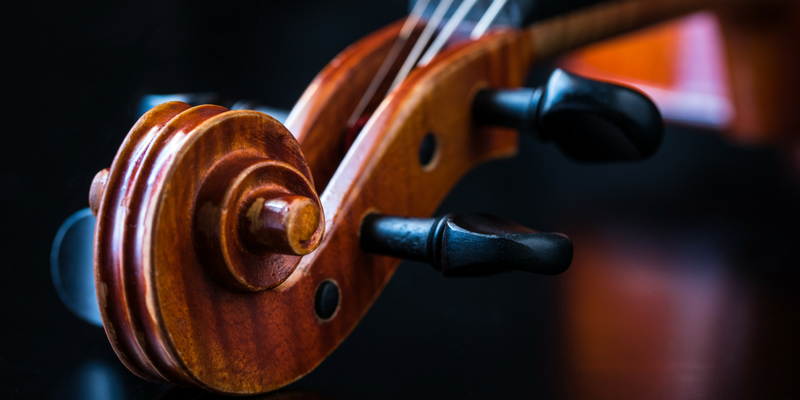Violin Vibrato Exercises

Are you curious about how to do vibrato on violin? Proper violin vibrato technique can mean the difference between mediocrity and the ability to capture the hearts of your audience.
The first step on the path to an exquisite vibrato is to understand how the motion actually works, which we’ll discuss below.
Understanding the Motion
Violin vibrato is a repeated, consistent oscillation in pitch that is produced by the cooperation of the forearm, wrist and fingers of the left hand. When done properly, it produces a sound similar to the operatic vibrato of the human voice, typically in the range of 5 to 7 oscillations per second.
The starting point for the motion is the first joint (closest to the fingernail) of the finger. Place your index finger on F#, in second position on the E string. Allow the first joint of the index finger to collapse and rock back to its original position in a slow, rhythmic fashion.
At first, the motion may feel awkward and forced. But as your hands acquire the muscle memory for this skill, you’ll be able to focus on loosening the wrist and forearm to encourage a smooth vibrato. Even in the beginning, make sure you’re not holding any tension in your wrist, arm or neck when practicing.
There are a few tricks you can use to achieve the proper motion. When applying index finger vibrato in second position, knock the back of your knuckles on the tuning peg as though you are knocking on a door. This serves as a good reference point for how wide the range of motion should be.
We’ll discuss how to incorporate the bow in a moment, but first let’s take a look at the importance of rhythm.
The Importance of Rhythm
We all know that rhythm is crucial to music. Without it, we would just have disassociated notes floating in space. The same goes for violin vibrato, so make sure to practice rhythmic consistency using a metronome.
For example, set your metronome to 60 beats per minute and practice “waving” the vibrato in quarter notes, in sync with the tick. Gradually increase the tempo until you’re ready to attempt eighth notes, which would be the equivalent of quarter notes at 120 beats per minute.
Using All Four Fingers
To truly master violin vibrato, you’ll need to be able to produce it with all four fingers. Once you’ve achieved a reliable index finger vibrato, begin to add the other fingers, using the same technique with the metronome as a guide.
You’ll notice that the precision required for an accurate vibrato increases as you move up the fingerboard, in the same way that the decrease in distance between pitches affects standard violin playing.
Work your way up by position, playing notes of the major and minor scale with vibrato on the corresponding fingers. You’ll know you have the technique down with all fingers when you can produce a vibrato in your scalar passages that sounds similar to a soprano human voice.
How to Apply the Bow
Now that we’ve covered the basics of how to produce a tasteful vibrato, a few words must be said regarding the use of the bow.
At this point, you should already be able to produce a long, sustained bow stroke running perpendicular to the string, across all four strings. To incorporate this with vibrato, start once more with the metronome at 60 to 70 beats per minute. Use long strokes, which will produce a sound similar to a siren as the finger waves back and forth.
As you increase the tempo, you’ll notice that the notes begin to sound much more like the ideal vibrato. But in the beginning, simply focus on oscillating the pitch to ½ step below and back again. Then tighten the vibrato to oscillate only ¼ tone.
Repeat the process using the scalar practice described in the previous section, and you’ll be breezing through tough passages in no time.
Scan for Tension
The last thing to be aware of is tension in the body. Tightness has a way of creeping into the face, neck, arm and shoulder, so you’ll want to perform frequent body scans when practicing your violin vibrato to ensure you’re not making it more difficult or putting yourself at risk of injury.
Also, don’t forget to breathe! It’s nearly impossible to take deep diaphragmatic breaths while holding muscle tension, so use that to your advantage during your practice sessions.
Good luck, and have fun taking your violin playing to the next level.
Access Classical Violin lessons directly from Richard Amoroso.








Comments